Best Casio Keyboards 2025: Our pick of the tech giant’s finest keyboards, whatever your budget or ability
Feeling the brain fog descend as you attempt to pick the right keyboard from Casio’s substantial range? Fear not, we’re here to bring clarity to your keyboard buying experience
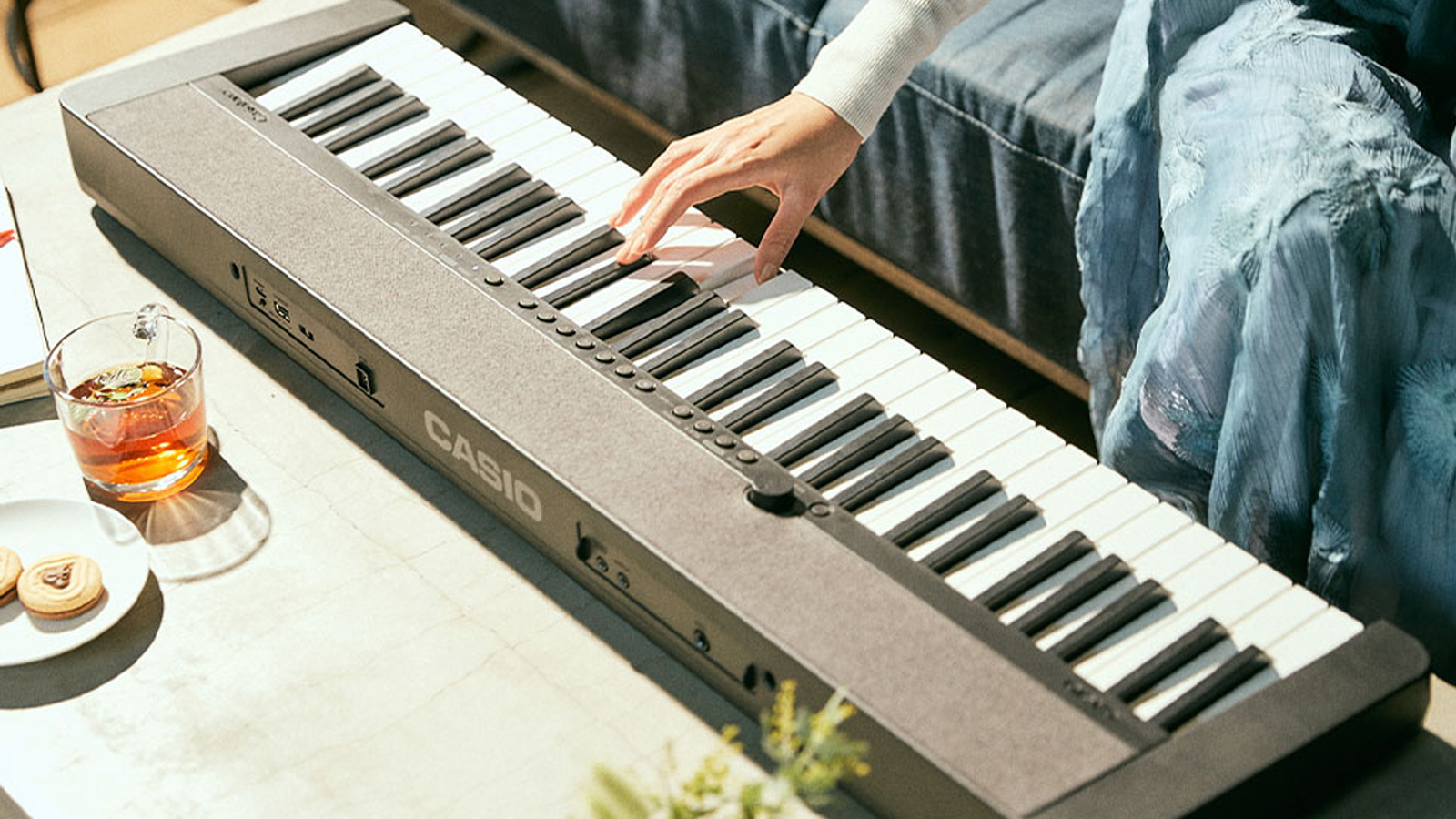
1. Our top picks
2. Product guide
3. Buying advice
4. How we choose products
Few instruments are more iconic than the best Casio keyboards. In musical circles, the Casio brand has been synonymous with electronic keyboards ever since its Casiotone models dominated the market back in the early 1980s. Keyboards of one type or another had been around for decades, but the Casiotone series nailed it with its vast multitude of sounds, fun auto-accompaniment features, and wallet-friendly price points.
Low on price but high on cheesiness, these early keyboards were often dismissed by serious musos as gimmicky. How things have changed. Casio still produces a plethora of keyboards at entry-level price points, but the sound and build quality is now up there with the very best. Of course, technology has moved on a pace too, so you’ll find even the budget models are awash with features that will help elevate your playing to the next level.
To help you find the best Casio keyboard for your needs we’ve put together this handy guide to showcase the brand’s choice instruments. Whatever your ability or budget, there’s something here for you. Although this buyer’s guide is about keyboards, it does contain some portable pianos, too.
If you just want to check out our choices, keep scrolling. If you’re looking for more guidance, hit the buying advice button above for more in-depth insight.
Best Casio keyboards: Our top picks
There are a lot of great instruments on this list, but for sheer freshness and uniqueness, the Casio CT-S1000V is a pretty exciting choice. Its vocal synthesis technology holds great promise, and even without that feature it’s an extremely capable and entertaining machine. If you’re not bothered about the vocal synthesis, you could always opt for the CT-S500, which will give you everything found on the CT-S1000V minus the vocal features, for $70/£50/€60 less.
If portable pianos are more your thing, then we recommend the PX-S1100. Though it’s not the cheapest instrument around, this updated model ticks all the right boxes, featuring a solid set of unparalleled acoustic piano tones, great keyboard action, excellent speakers and a slim profile.
Or if you want a great beginner keyboard for your child to mess around on and get inspired to pursue music as a hobby, then the diminutive, bargain-priced SA-76 is a no-brainer as a fun and entertaining gateway to learning the keyboard.
Best Casio keyboards: Product guide & reviews
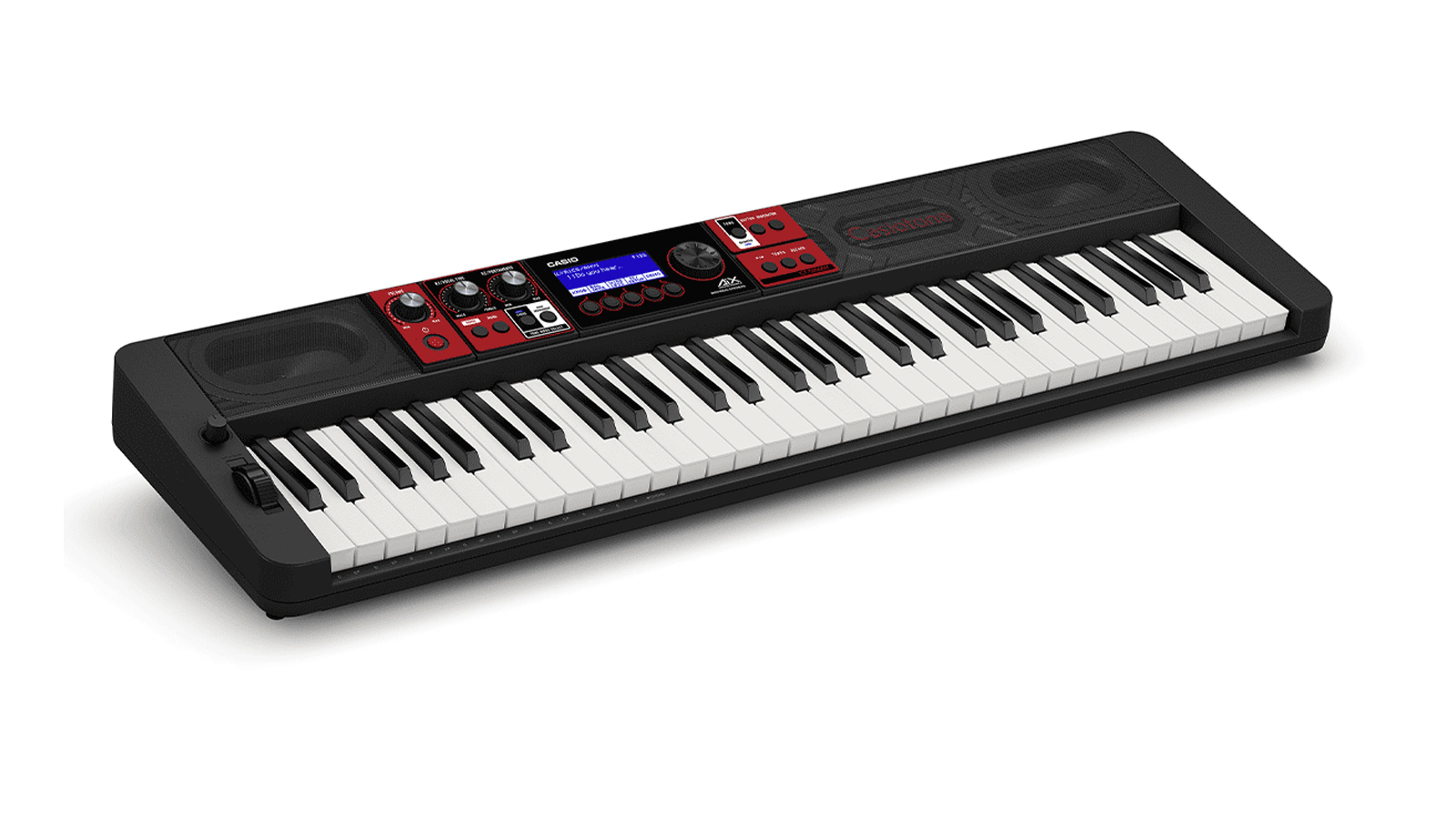
1. Casio CT-S1000V
Our expert review:
Specifications
Reasons to buy
Reasons to avoid
Launched in January 2022, Casio’s latest offering features a pretty unique selling point in the shape of vocal synthesis. In a feature not found on any other keyboard at this price – or indeed any other keyboard full stop – the CT-S1000V will ‘sing’ lyrics typed into it via an app on your mobile device in one of 20 different voices.
Even without the vocal trickery, this is an extremely capable arranger keyboard, with 800 AIX instrument tones, a great-feeling 61-key velocity-sensitive keyboard, and some slick-sounding auto-accompaniment grooves.
Three controller knobs will enable you to tweak sounds as they’re playing, and there’s also a pitch bend wheel, a rudimentary built-in sampler, plus Bluetooth audio streaming and wireless MIDI support with the included WU-BT10 Bluetooth dongle. Phew!
Read the full Casio CT-S1000V review
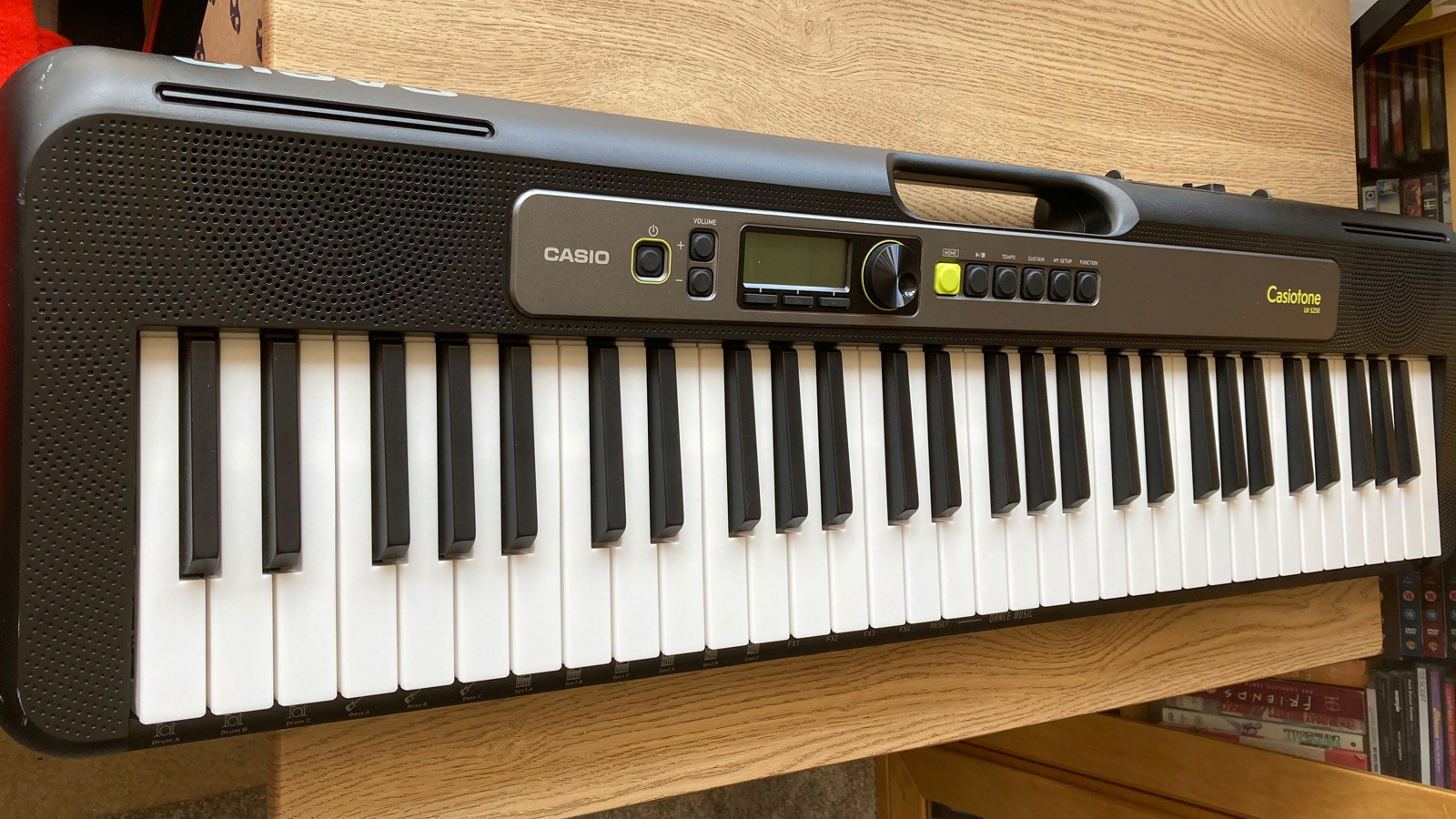
2. Casio LK-S250
Our expert review:
Specifications
Reasons to buy
Reasons to avoid
Almost identical in spec to the CT-S300, the LK-S250 features 61 full-size, velocity-sensitive, light-up keys. This means that when you’re playing along to an onboard Step Up lesson or one of the 60 built-in songs, the correct keys will light up to tell you which notes to play.
The LK-S250 can be hooked up to a smart device via its micro-USB port, and used with Casio’s Chordana Play app, which makes full use of those light-up keys to further broaden the keyboard’s educational potential. Plus you can plug an external music source into the keyboard’s minijack audio input to play along with MP3s of your favourite tracks.
Hugely portable thanks to its lightweight, slim profile and carrying handle, the LK-S250 can be powered by batteries, making it easy to take your practice sessions anywhere. Four-hundred tones and a Dance Music mode with 50 extra rhythms add to the entertainment, making this a great all-rounder.
Read our full Casio LK-S250 review
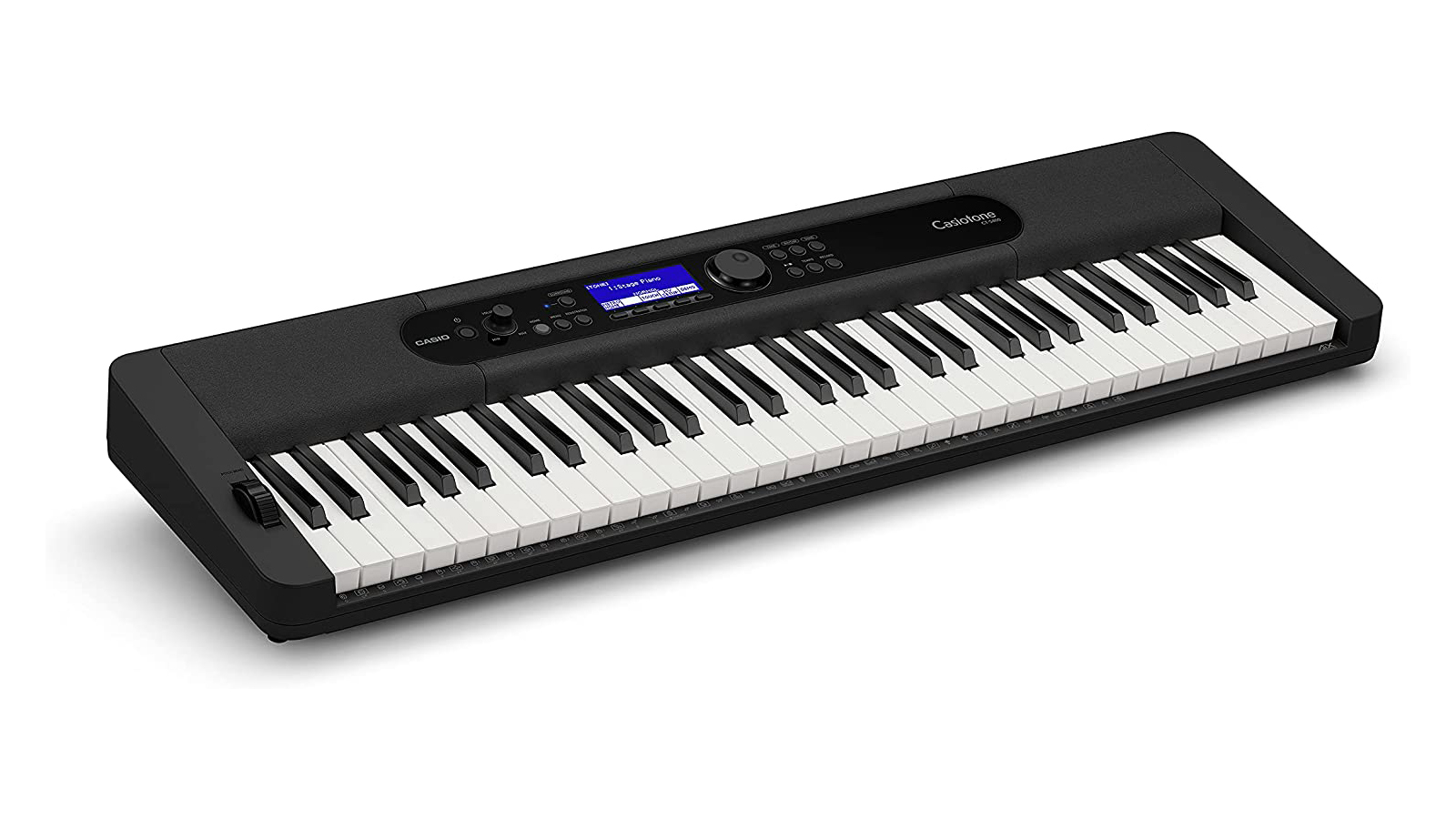
3. Casio CT-S400
Our expert review:
Specifications
Reasons to buy
Reasons to avoid
In 2019, Casio revived the Casiotone brand from the 1980s by launching three new 61-key portable keyboards bearing the CT model prefix – the CT-S100, the CT-S200 and the CT-S300. In 2021, the trio became a quartet with the arrival of the flagship CT-S400.
You still get a 61-key, full-size, velocity-sensitive keyboard, a pitch-bend wheel and the AIX sound engine, but the CT-S400 improves on the CT-S300 on a number of fronts, offering more than 600 tones, 200 accompaniment styles and an improved yet still simple interface that employs five user-configurable soft buttons beneath a new backlit screen.
Casio’s philosophy is to help people make music any time, anywhere, and the CT range perfectly embodies that principle. The CT-S400 is a worthy range-topper, but if illuminated keys are your thing, there’s an equivalent light-up model called the LK-S450.
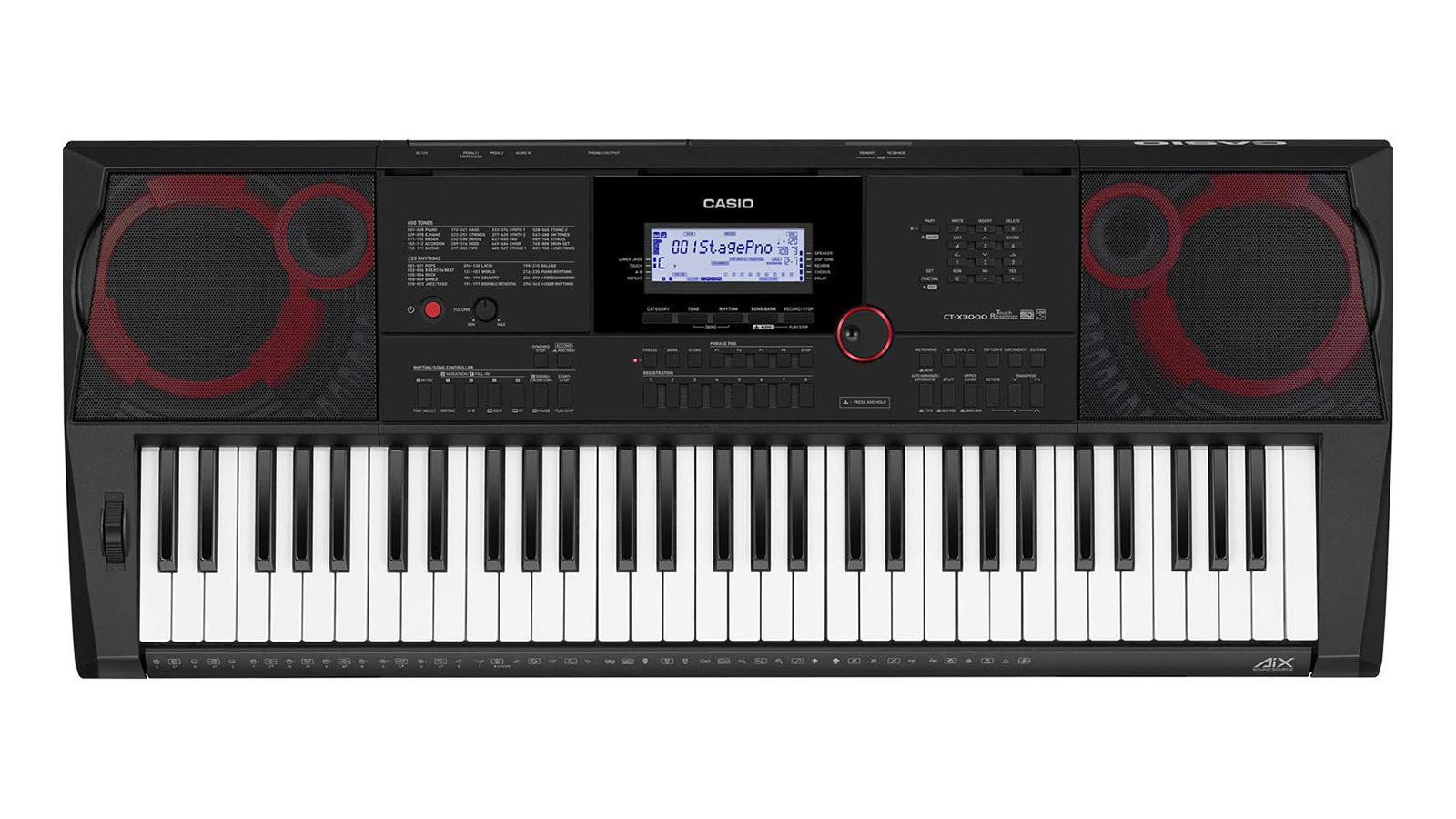
4. Casio CT-X3000
Our expert review:
Specifications
Reasons to buy
Reasons to avoid
Casio’s flagship CT-X5000 is a superb keyboard - after all, it’s made this guide - but it comes with a hefty price tag and a feature set aimed squarely at performers. If you have a little less cash and no desire to perform beyond your living room, then the almost identical CT-X300 makes a lot of sense. It’s slightly less feature rich, but does trump its better endowed brother in one respect.
So, other than the hefty price tag, what else is it missing? Essentially, it lacks only two major features, which are only really of interest to gigging musicians. Firstly, while the CT-X3000 ships with a perfectly adequate 13W amplification system, the CT-X5000 can pump out a room-filling 30 watts (15W x 2). Secondly, if that’s not enough power then you can plug the stereo line outs into an external speaker system or PA.
Beyond those significant (for some) differences, the CT-X5000 features a few extra buttons for slicker performance, more onboard effects, and a programmable EQ. However, the ‘lowly’ CT-X3000 still bristles with 800 instrument tones, 260 accompaniment styles, superb bass reflex speakers and Casio’s premium AiX sound engine. Unlike the CT-X5000 it can also be powered using batteries alone.
Let’s be honest, if we had the money we’d opt for the CT-X5000, but the CT-X3000 is almost certainly better value for the majority of users.
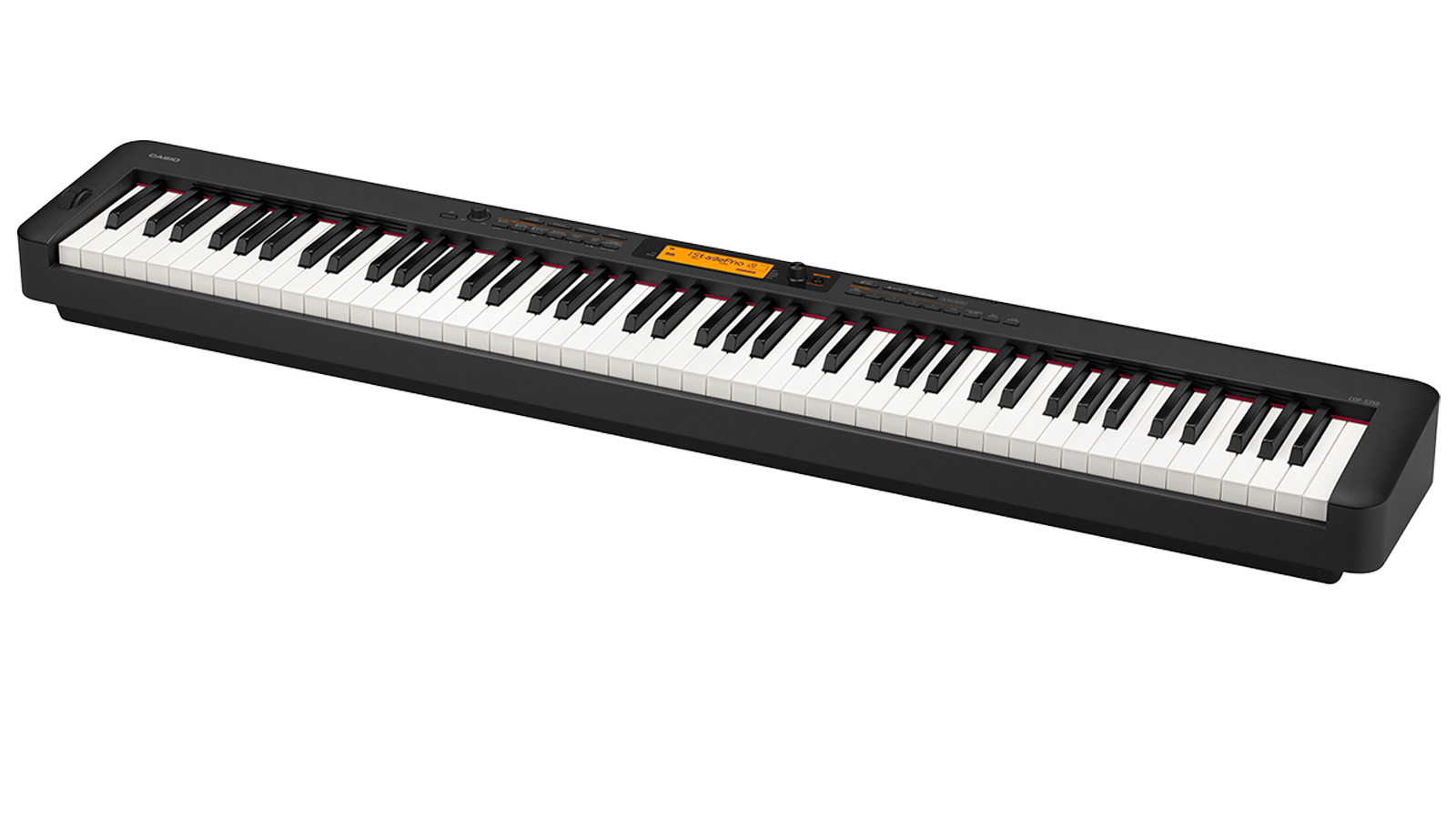
5. Casio CDP-S350
Our expert review:
Specifications
Reasons to buy
Reasons to avoid
Casio’s CDP model designation stands for Compact Digital Piano, and that’s the perfect way to describe the CDP-S350. Yet this 88-key, professional-sounding instrument has a few tricks up its sleeve. Nestling beneath that unassuming, piano-like exterior are 700 instrument tones and 200 auto-accompaniment styles taken from the CT-X arranger keyboard models.
The CDP-S350 features Casio’s latest Scaled Hammer Action II keyboard, which, together with the simulated ebony and ivory textured keys, provides the authentic playing feel of an acoustic piano. A fantastic 8W speaker system delivers those 700 tones very effectively, and the acoustic piano sounds themselves are second to none.
Blurring the lines between the digital piano and its cousin the portable arranger keyboard, the CDP-S350 is a super-slim and truly versatile hybrid instrument that would be just as comfortable in a professional setting as it would in a learning situation at home.

6. Casio CT-S1
Our expert review:
Specifications
Reasons to buy
Reasons to avoid
Launched in April 2021, the Casio CT-S1 is the spiritual successor to the original Casiotone CT-201 that started it all. Available in black, white or red, it comes with 61 tones that are powered by the excellent AIX sound engine and accessed by a simple interface, with no screen or menu diving. It works on six AA batteries, and also has strap buttons and a class-compliant USB port, so can take on keytar or MIDI controller duties, too.
The CT-S1’s sounds are fantastic, and the onboard speakers go loud enough to do them justice. The acoustic piano is particularly rich and dynamic, programmed to take full advantage of the responsive keybed.
You do get some drum sounds, but there’s no auto-accompaniment features, so the CT-S1 is really aimed at keyboard players who are after a decent range of truly excellent, usable sounds in a portable, affordable package.
Read the full Casio CT-S1 review

7. Casio CT-X700
Our expert review:
Specifications
Reasons to buy
Reasons to avoid
Launched in 2018, the CT-X range was the first line of keyboards to feature Casio’s now- renowned AIX (Artistic Intelligent Expression) sound engine, with the CT-X700 being the entry-level model.
Sixty-one full-size, velocity-sensitive keys, a solid-sounding pair of 2.5W speakers, a generous 600 tones, 100 arpeggios and 195 rhythms, a six-track song recorder and Casio’s Step Up onboard lesson system are just a few of the features squeezed into this keyboard. Casio has even thoughtfully provided a dedicated pad to rest your smartphone on when using it as a sound source via the audio-input jack on the back of the instrument.
The realistic piano sounds, along with the broad range of high-quality voices and accompaniment styles, make the CT-X700 a tempting proposition for anyone in the market for an affordable, well-built and versatile portable arranger keyboard.
Read the full Casio CT-X700 review
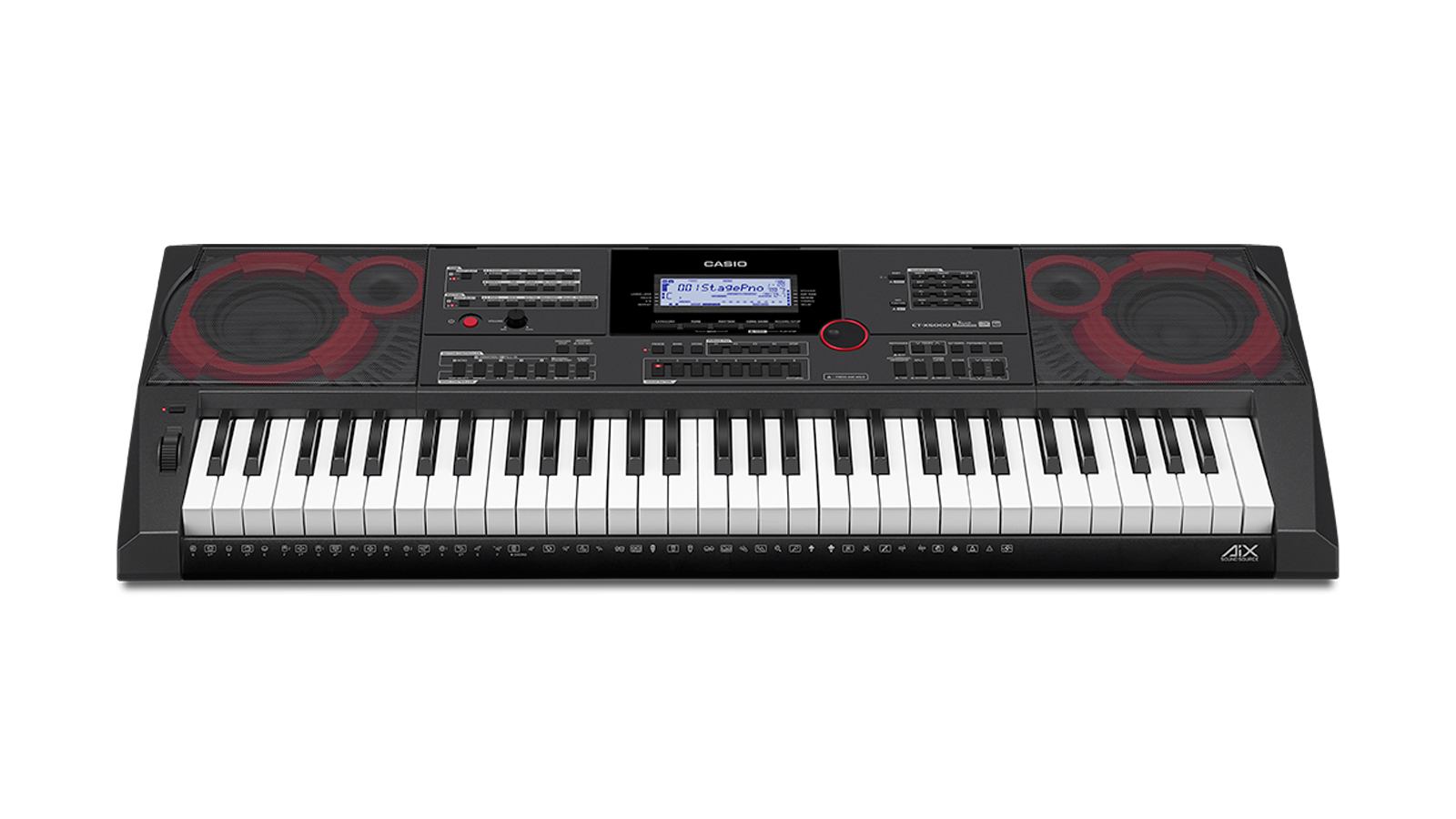
8. Casio CT-X5000
Our expert review:
Specifications
Reasons to buy
Reasons to avoid
At the opposite end of the scale from the CT-X700, we have the CT-X5000, the flagship model of the CT-X range. This model seems more geared up for live performance than the other models in the line-up, due to the line outputs and microphone inputs found on the back panel, along with the powerful, room-filling twin-15W speaker system.
With a sharp, modern geometric design and crimson accents, the CT-X5000 both looks and sounds the part, with over 800 preset AIX voices, 235 rhythm tracks, 100 DSP effects, a USB port, a 3.5mm auxiliary input, and much more besides.
What sets this model apart is that you can store 100 user rhythms in the keyboard’s memory, and get direct access to instrument categories via dedicated buttons. It also has a modulation button above the pitch wheel. Due to that impressive speaker array, though, the CT-X5000 is the only model in the range that’s not capable of running on battery power.
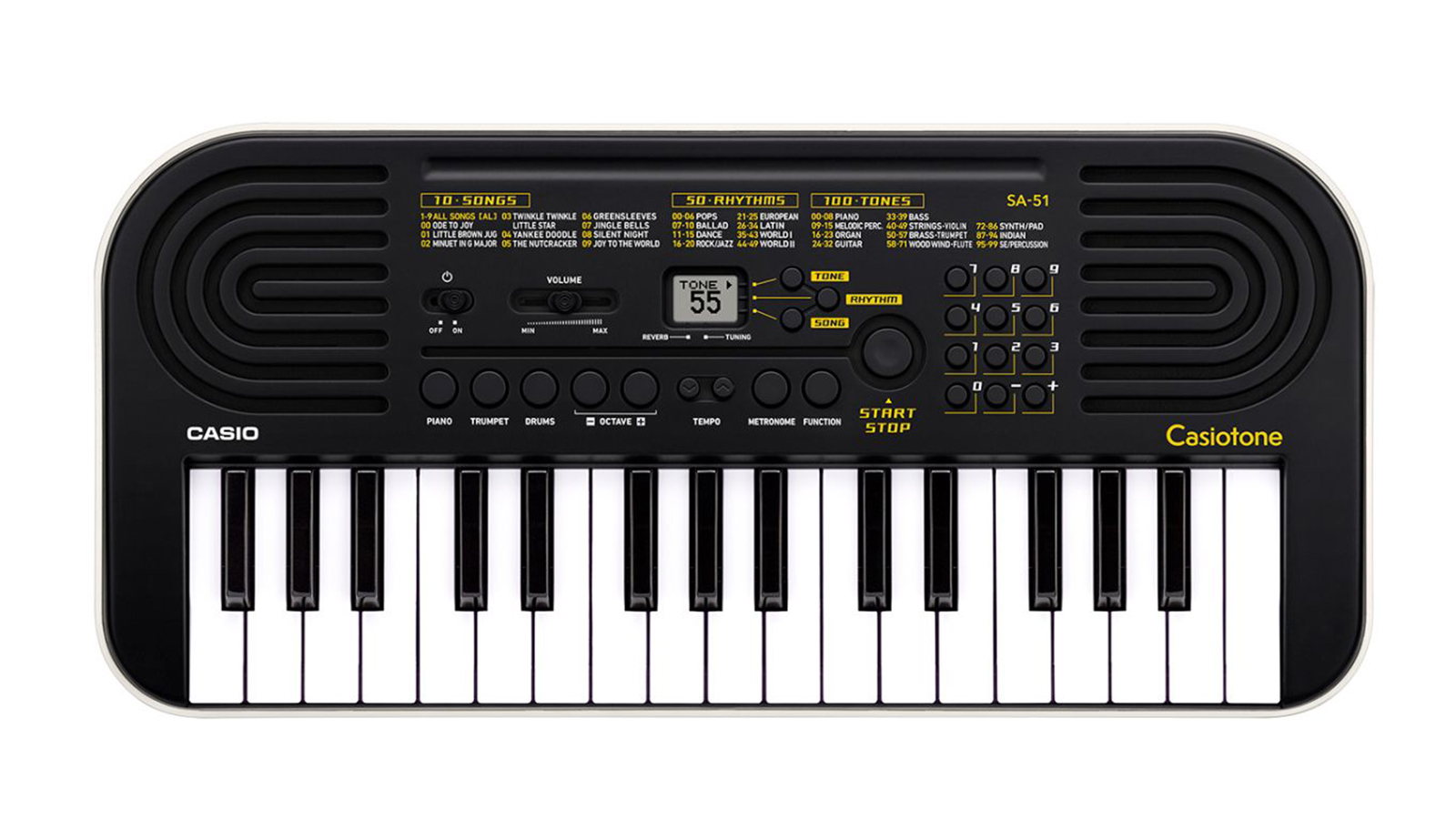
9. Casio SA-51
Our expert review:
Specifications
Reasons to buy
Reasons to avoid
If Casio’s SA-7x range of children’s keyboards is still somewhat grown-up for your little darlings, then consider the even more elementary SA-51. Weighing in at less than a kilo, measuring just 44.6cm across and equipped with 32 mini keys, it’s the perfect size for little hands.
Despite its toy-like looks, it’s more than just a plaything. One hundred tones with shortcuts to piano, trumpet and drums, 50 built-in rhythms and 32 note polyphony make it an intriguing learning tool for young minds, plus they’ll get access to free lessons at Casio’s Music Academy.
Sound output is stereo, and although the speakers are closely spaced the quality is remarkably good for the price - a godsend for long-suffering parents! The only downside is that the mains power adapter is an optional extra. Still, your little ones will get up to 10 hours of continuous use from 6 AA rechargeable batteries. Which is probably plenty.
We never recommend any instrument as a throw-away item, but the SA-51 is so inexpensive that if it does get daubed in a mixture of squished pasta and Nutella it’s hardly the end of the world.
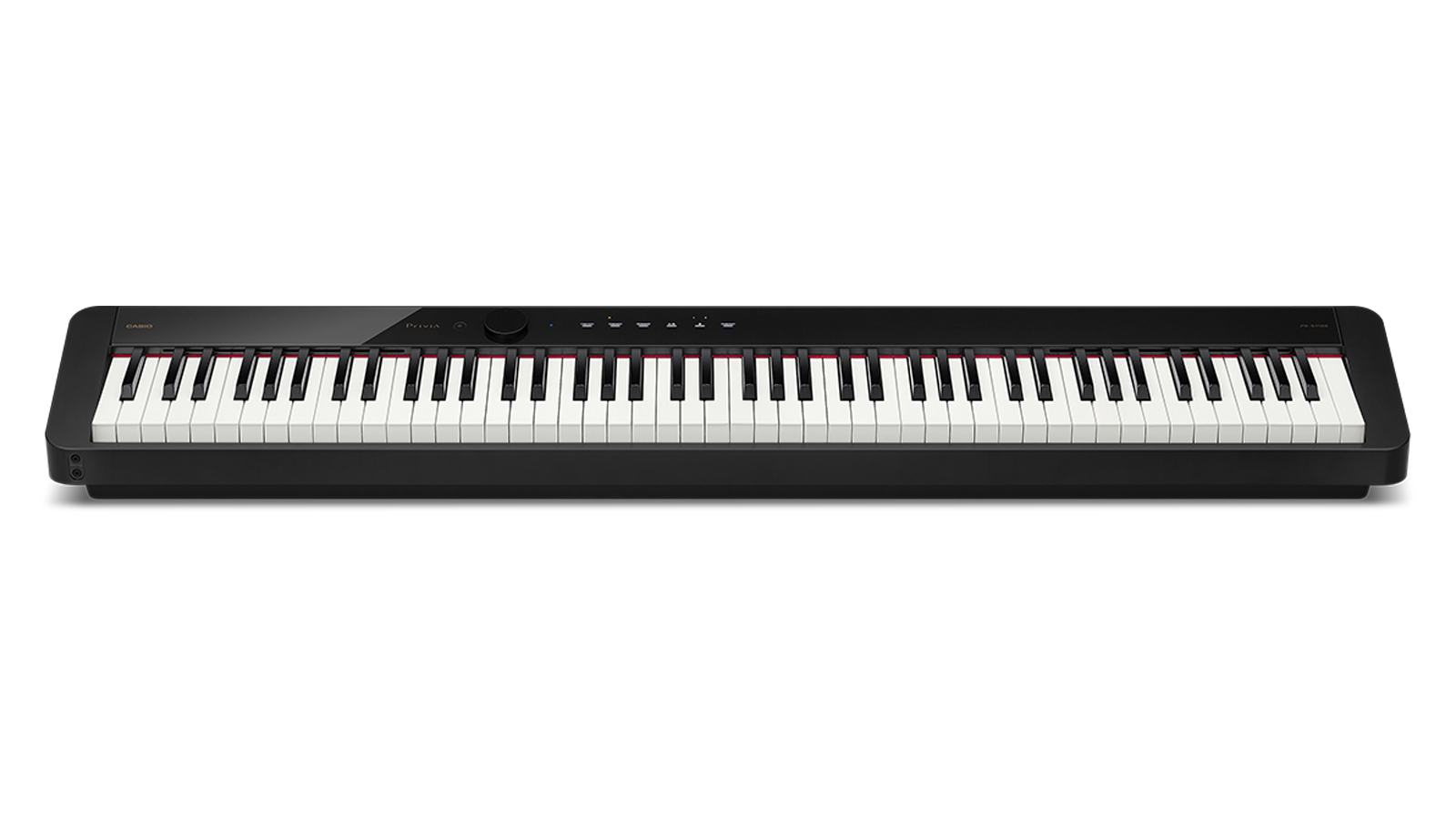
10. Casio PX-S1100
Our expert review:
Specifications
Reasons to buy
Reasons to avoid
An upgraded version of the Privia PX-S1000 – which Casio claims to be the world’s slimmest digital piano – the PX-S1100 builds upon an already impressive list of features by adding Bluetooth audio and MIDI connectivity, an enhanced AIR (Acoustic intelligent Resonator) grand piano tone for even more musical expression, a tweaked speaker system, plus a USB audio record and playback function.
Though it’s still a relatively portable unit, the PX-S1100 is a serious instrument, with an active touch-panel display, Casio’s great-feeling Smart Scaled Hammer Action weighted keyboard and a whopping 192-note polyphony to ensure you won’t have any sustained notes dropping out.
It only comes with 18 instrument voices but, as you’d expect from a professional-grade digital piano, string resonance, damper resonance, key action noise and damper noise are all present and correct in the rich, detailed grand piano tone. The PX-S1100 has two headphone outputs for duets or lessons, and is available in three colours – black, white or red.
Read the full Casio PX-S1100 review
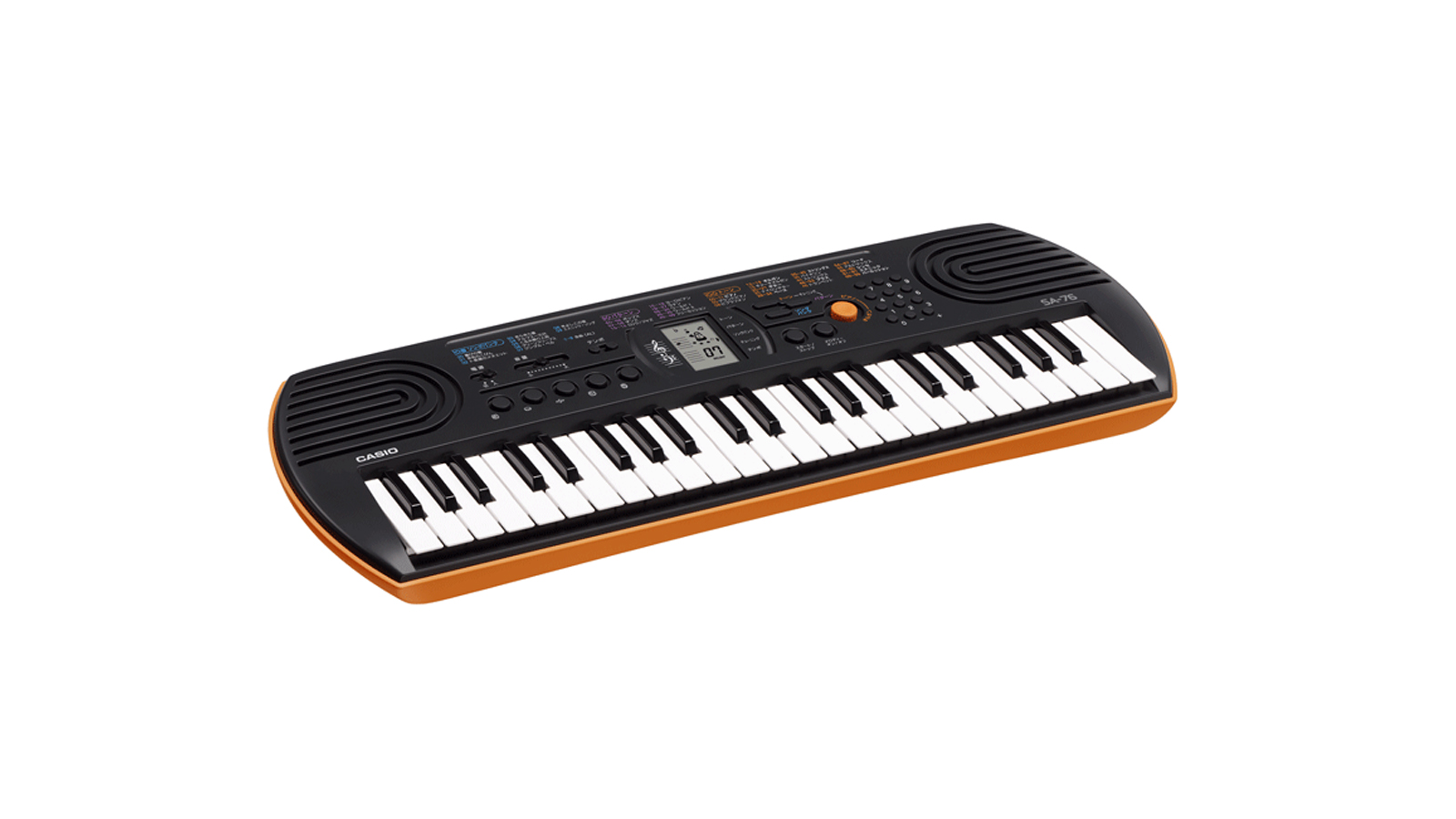
11. Casio SA-76 / SA-77 / SA-78
Our expert review:
Specifications
Reasons to buy
Reasons to avoid
The tiny but mighty SA-76 is a colourful and fun way to start your kids off on the path to exploring the world of music. It’s affordable enough to help determine whether or not you have a budding Mozart in the house, without breaking the bank.
The three model designations in the SA range relate to the case colour – the SA-76 has an orange casing, the SA-77 is grey and the SA-78’s undercarriage is bright pink. Aside from that, the spec is the same, this mini marvel squeezing in 100 instrument tones, 50 rhythms and 10 basic integrated songs, an LCD display, five drum pads for tapping out your own rhythms, twin speakers and, perhaps most importantly, a headphone jack!
Changing between piano, organ and harmonium sounds is achieved by pressing the big orange button on the front panel. The 44 mini keys aren’t velocity-sensitive, but that’s not really a deal-breaker at this level – as a fun way for kids to get into picking out simple melodies over fun backing tracks, there aren’t many better options out there.
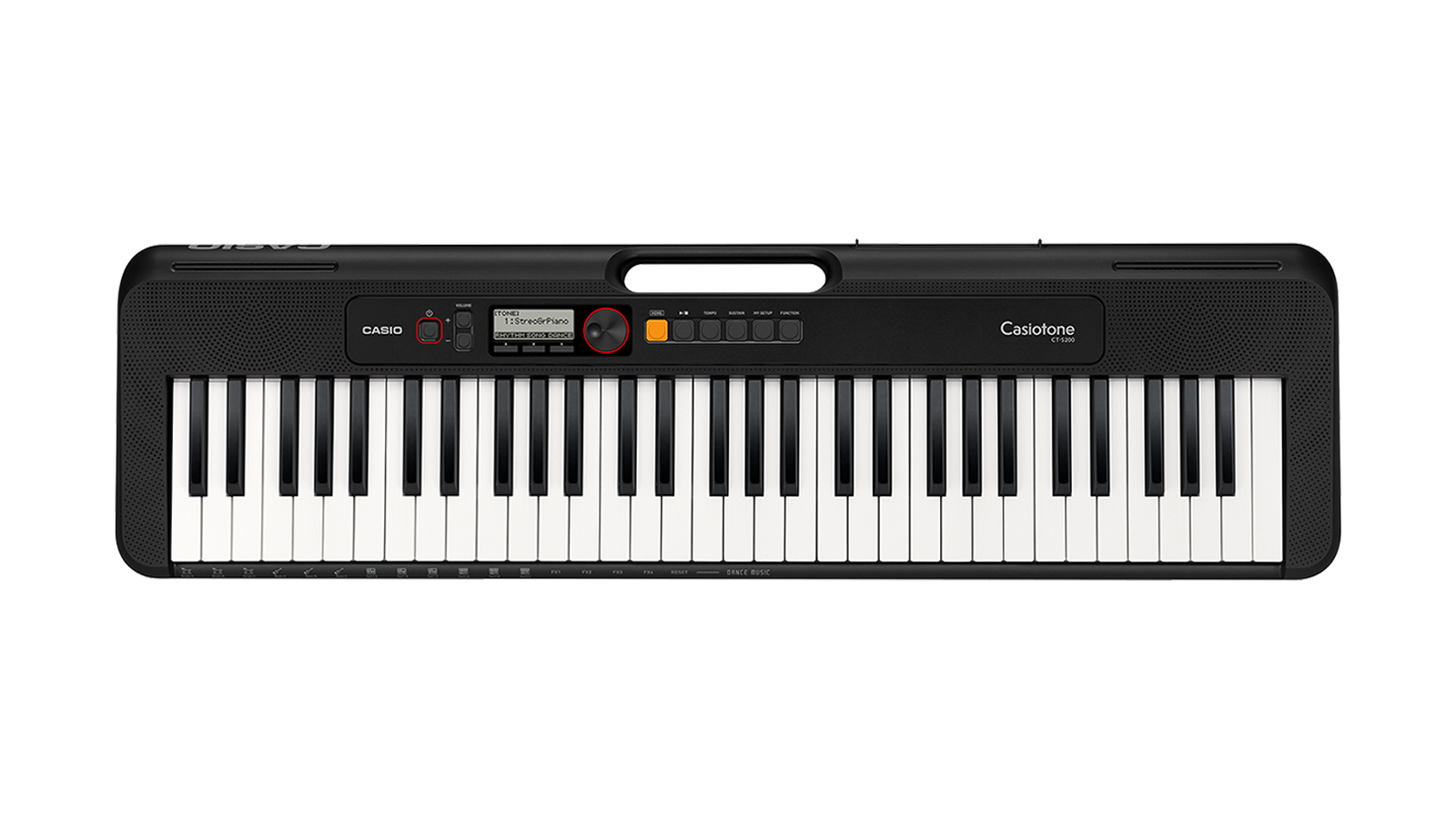
12. Casio CT-S200
Our expert review:
Specifications
Reasons to buy
Reasons to avoid
When Casio took the opportunity to relaunch the iconic Casiotone brand in 2019, it essentially repackaged its CTK range of beginner keyboards into three new Casiotone models – the CT-S100, the CT-S200 and the CT-S300 – designed to be the world’s most portable 61-note keyboards.
Of the three, it’s the CT-S200 that makes it onto our list, the reason being that it offers substantially more in the way of sounds, features and value than the entry-level CT-S100 for only slightly more dosh, comes in three different colours and is also compatible with the new Casio Music Space app.
There’s a simple control panel with a rotary dial and an LCD display, 400 tones, 77 accompaniment styles and a Dance Music mode with 50 patterns of its own. If you want velocity-sensitive keys and pitch bend, then the CT-S300 is the model to shoot for; otherwise, the CT-S200 has a tremendous amount to offer for those just starting out.
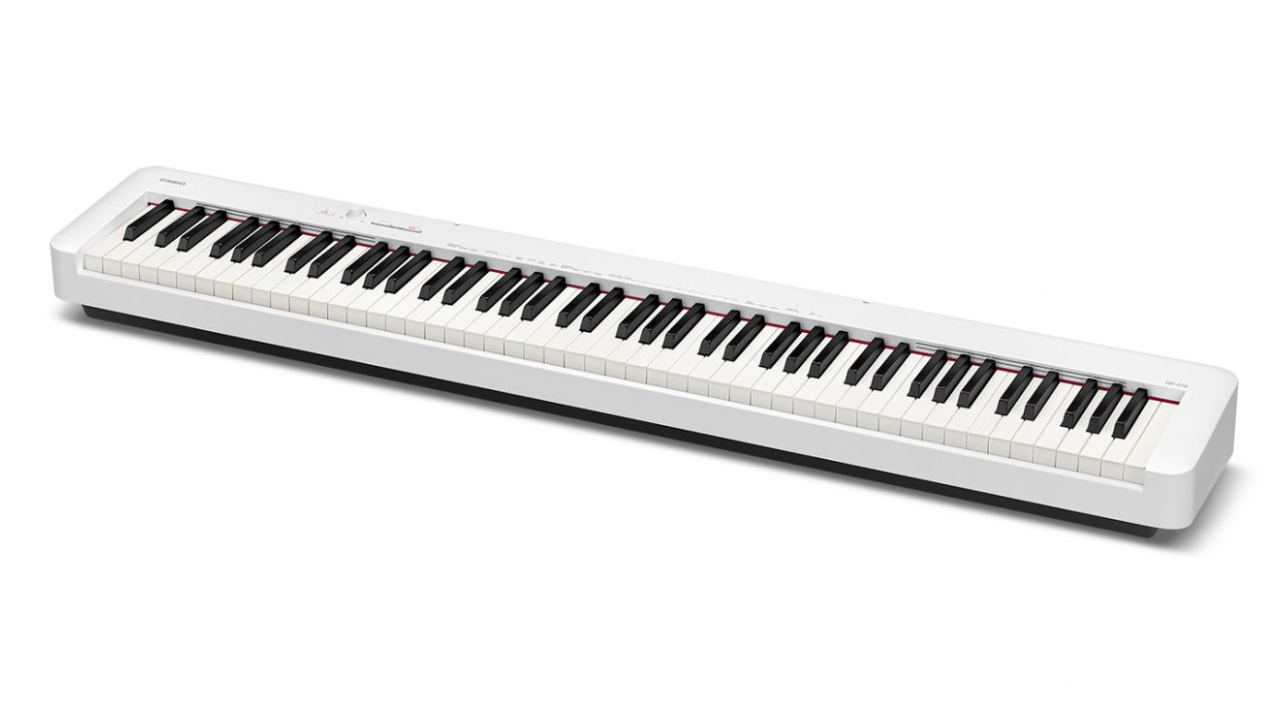
13. Casio CDP-S110
Our expert review:
Specifications
Reasons to buy
Reasons to avoid
We have already featured its big brother, the PX-S1100, but we feel it’s essential to showcase the entry-level Casio CDP-S110. Despite its tiny price tag, the S110 still manages to feature a fully-weighted, hammer-action 88-note keyboard, ten unique voices and can even be run on batteries for extreme portability.
This brand new Casio keyboard builds on the legacy of its predecessor - the CDP-S100 - but employs a few valuable upgrades. Despite keeping many of the features the same, there have been a few tweaks to the velocity and decay time on the core piano tones, which results in a very natural and satisfying piano tone.
For our money, the Casio CDP-S110 is easily one of the most impressive beginner pianos on the market, combining quality sounds, a fantastic feeling keyboard, and stellar build quality.
Read our full Casio CDP-S110 review
Best Casio keyboards: Buying advice
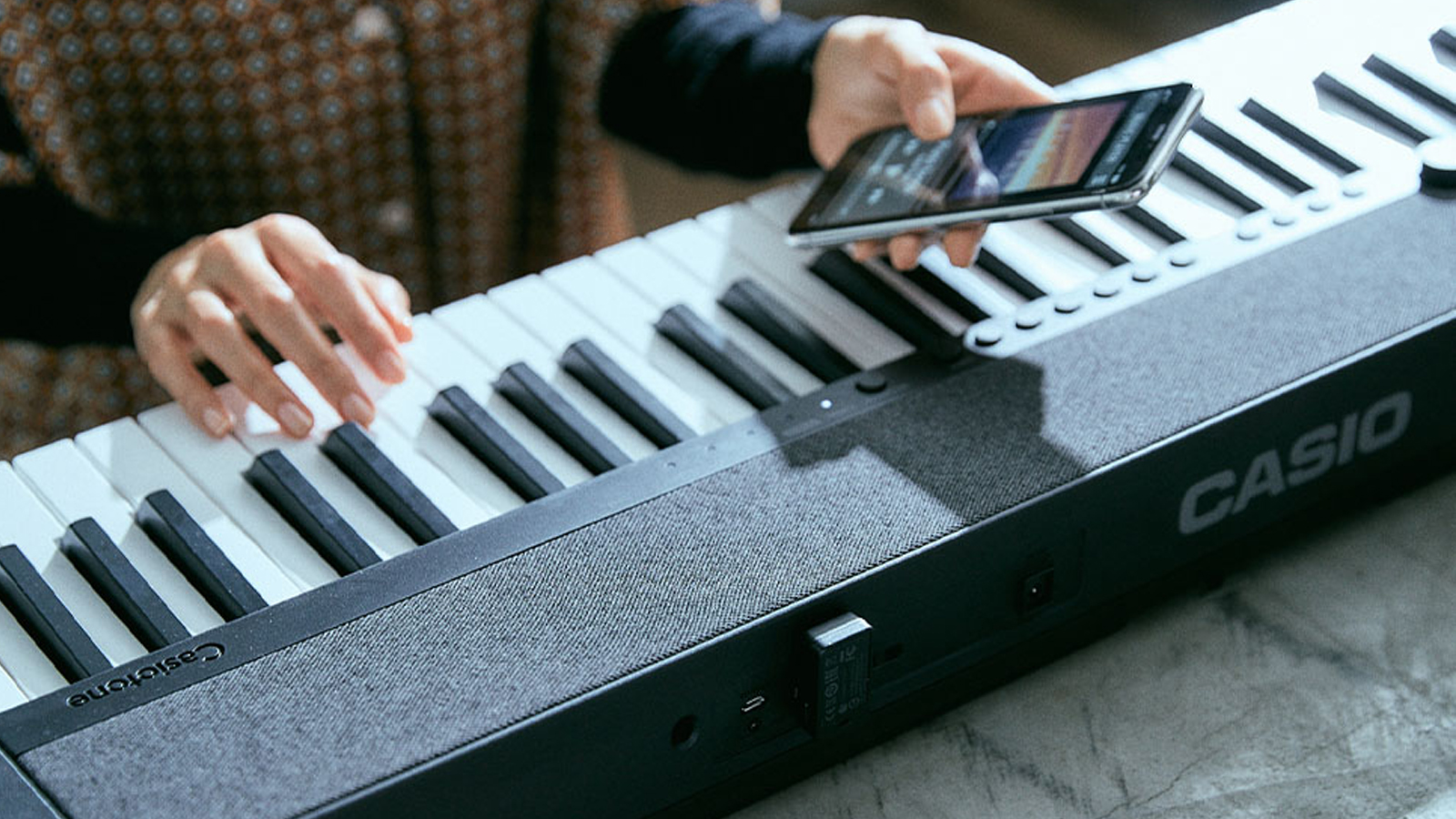
What’s an arranger keyboard?
By definition, an arranger keyboard is one that features built-in rhythms, along with ‘virtual band’ accompaniments. With the latter, you need only play a chord with your left hand (this can usually be done with a single finger if you don’t feel like playing the complete chord), and your virtual band will play along while you pick out the melody with your right hand.
Because the accompaniment styles are pre-programmed at the factory, they’re pretty much dependent on the in-house composers’ music tastes. As a result, auto-accompaniment features tend to be a bit ‘Marmite’ – you either love them or hate them. To be fair, keyboard manufacturers have been working hard to ensure that the styles included in their latest models are elevated above the cheese level normally associated with this kind of thing. Casio is no exception, and the Japanese firm currently offers some of the most articulate backing-band styles on the market. Sophistication levels will naturally rise in tandem with price, but most of the keyboards on this list feature a good mix of traditional and current styles.
What’s a digital piano?
We’ve included a few digital pianos in this guide, so it’s worth making the distinction even though there’s often a lot of overlap between them and arranger keyboards.
Essentially, digital pianos aim to give an authentic simulation of a traditional piano but in a convenient, keyboard-like format. They are likely to have any number of voices but most of these will be quality piano tones, plus perhaps a few organs. They differ from arranger keyboards in that they are unlikely to have auto-accompaniment features.
The more expensive models may have a hammer action, fully weighted keybed to mimic the touch and dynamics of a real piano, and there’s usually the option to purchase an 88-key version.
What to look out for when buying a Casio keyboard
MusicRadar's got your back
Voices
Arranger keyboards often ship with hundreds of different instrument presets, representing practically every instrument that exists and probably quite a few that don’t. Bear in mind that quantity isn’t always a measure of quality, though – it’s far better to have fewer usable voices than hundreds you’ll never bother with, especially if you’re more in the market for a digital piano than a portable keyboard. For more information on the differences between the two types of instrument, see our digital piano vs keyboard article here.
Styles
The term ‘style’ refers to a set of backing instruments that play along with you as you hold down a chord with your left hand. Styles are usually categorised by genre, with all of the keyboards on this list offering a broad selection from across the globe. These are always going to be divisive, and somebody else’s idea of a cool drum rhythm and accompaniment won’t always be to your taste. That said, Casio seems to have really done its homework in this area of late, and some of the pre-programmed styles on its more recent launches are very sophisticated and usable.
Keys
The average portable electronic keyboard will have 61 keys – a span of five octaves that comfortably allows for two-handed playing – while digital pianos normally have the full set of 88 keys (eight octaves). The majority of the keyboards and pianos shown here conform to these numbers, the exception being the SA-76/77/78 and the SA-51, which sport 44 and 32 mini keys respectively for a more child-friendly alternative. Nearly all the products are velocity-sensitive, allowing for dynamic expression according to how hard or softly you play the keys, while the digital pianos on the list come with fully weighted, hammer-action keyboards.
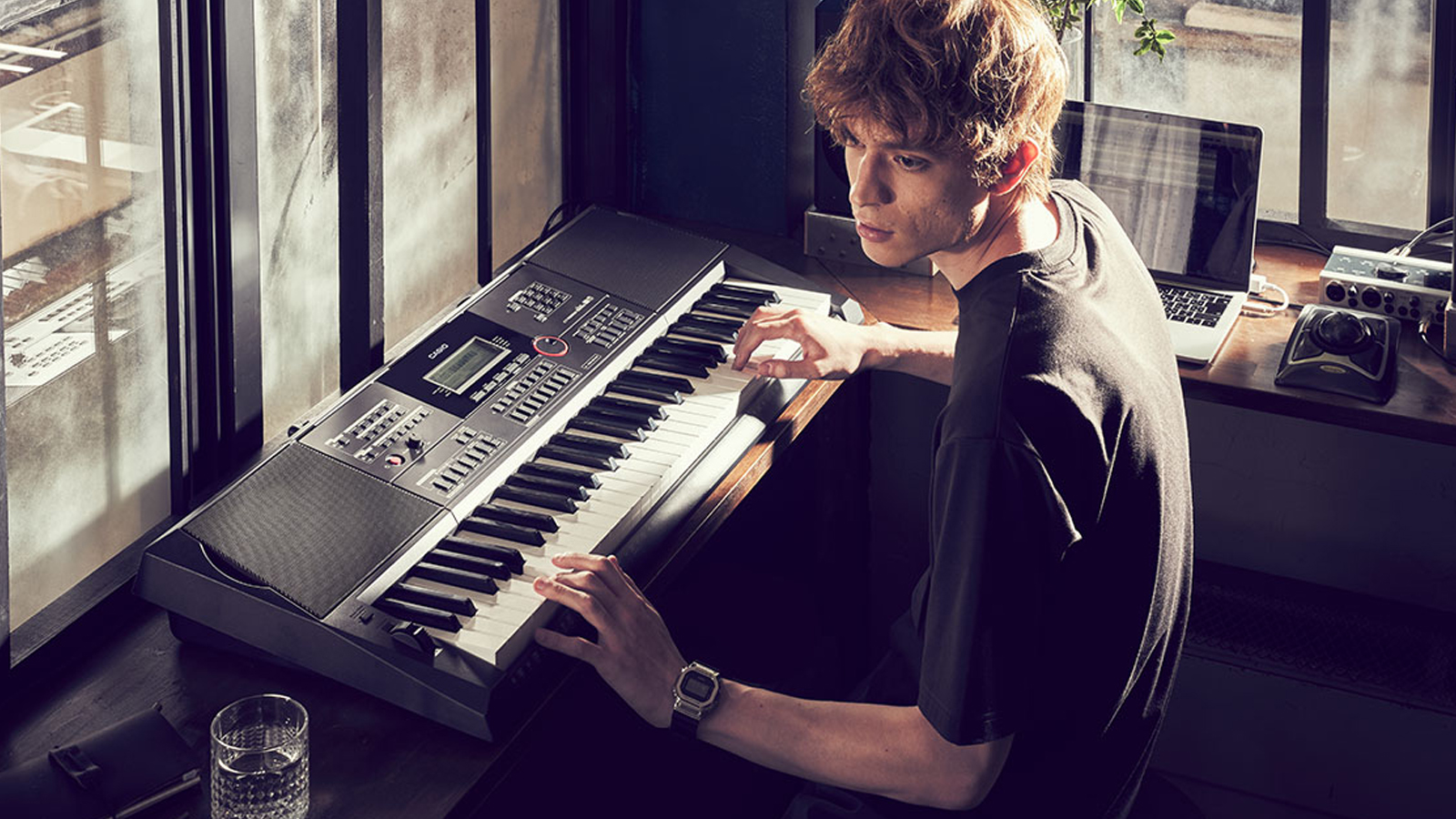
Speakers/headphones
Every product on this list has built-in stereo speakers, so you won’t have to connect up to an amp or portable PA system in order to hear what you’re playing. To keep other family members and neighbours sweet, they also all come with at least one headphone socket for silent practising!
Power supply
All of the products on this list can be powered via a standard power supply or USB, and some enable you to use batteries – a handy option for those who need some portability.
Bluetooth capability
Want to stream audio from your smartphone or tablet to your keyboard so that you can play along? Although Bluetooth isn’t featured as standard on a lot of the keyboards on our list, newer models like the CT-S1 and the CT-S400 are compatible with Casio’s optional WU-BT10 Bluetooth adapter. Retailing at $80/£59/€70, this device plugs into a USB port on the rear of compatible keyboards, adding the ability to receive and play audio using your keyboard’s built-in speaker system. Though it’s not usually included in the box, if you shop around it’s possible to find deals that include the WU-BT10 in the purchase price.
Educational features
There’s a good chance that you’re looking at keyboards because you want to learn how to play. Happily, almost all Casio keyboards offer educational features, from onboard lessons to compatibility with downloadable apps and services, some of which are outlined below.
Step Up lessons
Casio’s onboard lesson system can teach you how to play a selection of pre-programmed popular songs (these will vary depending on which model of keyboard you have). It’ll let you practise certain phrases of your chosen song, enabling you to learn the left-hand and right-hand parts separately or together – and you can even speed up or slow down the tempo according to your prowess. Overall, it’s quite a useful feature for beginners wanting to learn their favourite songs, though the process can be quite involved.
Chordana Play
Compatible with all of Casio’s current keyboard and piano line-up, Chordana Play and Chordana Play Piano are free educational apps (Android or iOS) that’ll help you learn how to play songs using a simple interface. Once connected via USB or Casio’s optional WU-BT10 Bluetooth dongle, you can browse the 50 or so traditional songs in the online library, or import any MIDI file you choose. The notes of the song will then drop down in a videogame style (and light up the keys if you have an LK-S250), enabling you to play the song while the app scores your performance. There’s even a mode where Chordana will wait for you to find the right key before continuing with the song, meaning you can learn at your own pace.
Casio Music Space
When connected to your Casio piano or keyboard, Casio Music Space can act as a digital music score, a teacher, a live-performance simulator and an all-round app with which to enjoy learning and playing music. Based around the functionality of Chordana Play but with an expanded array of features, it’s aimed at complete beginners, people taking up an instrument again, or intermediate to advanced players who want to experience a new way of playing.
Casio Music Academy
Buy any of the best Casio keyboards or digital pianos and you’ll be granted free access to the Casio Music Academy. Designed by music teachers, this online portal combines video tutorials with an app that connects to your keyboard via a USB cable or the optional WU-BT10 Bluetooth dongle. While you play, it’ll analyse your performance and show you how to improve, step by step.
How we choose the best Casio keyboards
Here at MusicRadar, we are experts in our field, with many years of playing, creating and product testing between us. We live and breathe everything music gear related, and we draw on this knowledge and experience of using products in live, recording and rehearsal scenarios when selecting the products for our guides.
When choosing what we believe to be the best Casio keyboards available right now, we combine our hands-on experience, user reviews and testimonies and engage in lengthy discussions with our editorial colleagues to reach a consensus about the top products in any given category.
First and foremost, we are musicians, and we want other players to find the right product for them. So we take into careful consideration everything from budget to feature set, ease of use and durability to come up with a list of what we can safely say are the best Casio keyboards on the market right now.
Find out more about how we test music gear and services at MusicRadar.
Related buying guides
- Best Yamaha keyboards: top picks for home music makers
- Best keyboard stands for home and stage use
- Best keyboard amps: hear yourself loud and clear
- Best arranger keyboards: great instruments for solo keys players
- These are the best piano VSTs
Get the MusicRadar Newsletter
Want all the hottest music and gear news, reviews, deals, features and more, direct to your inbox? Sign up here.
Dave has been making music with computers since 1988 and his engineering, programming and keyboard-playing has featured on recordings by artists including George Michael, Kylie and Gary Barlow. A music technology writer since 2007, he’s Computer Music’s long-serving songwriting and music theory columnist, iCreate magazine’s resident Logic Pro expert and a regular contributor to MusicRadar and Attack Magazine. He also lectures on synthesis at Leeds Conservatoire of Music and is the author of Avid Pro Tools Basics.
- Simon Fellows
- Daryl RobertsonSenior Deals Writer
MusicRadar deals of the week: Enjoy a mind-blowing $600 off a full-fat Gibson Les Paul, £500 off Kirk Hammett's Epiphone Greeny, and so much more
“For those who think they know Joel’s story, as well as those who are not as familiar, I believe this two-part film is both a revelation and a surprise”: New Billy Joel doc is on the way
